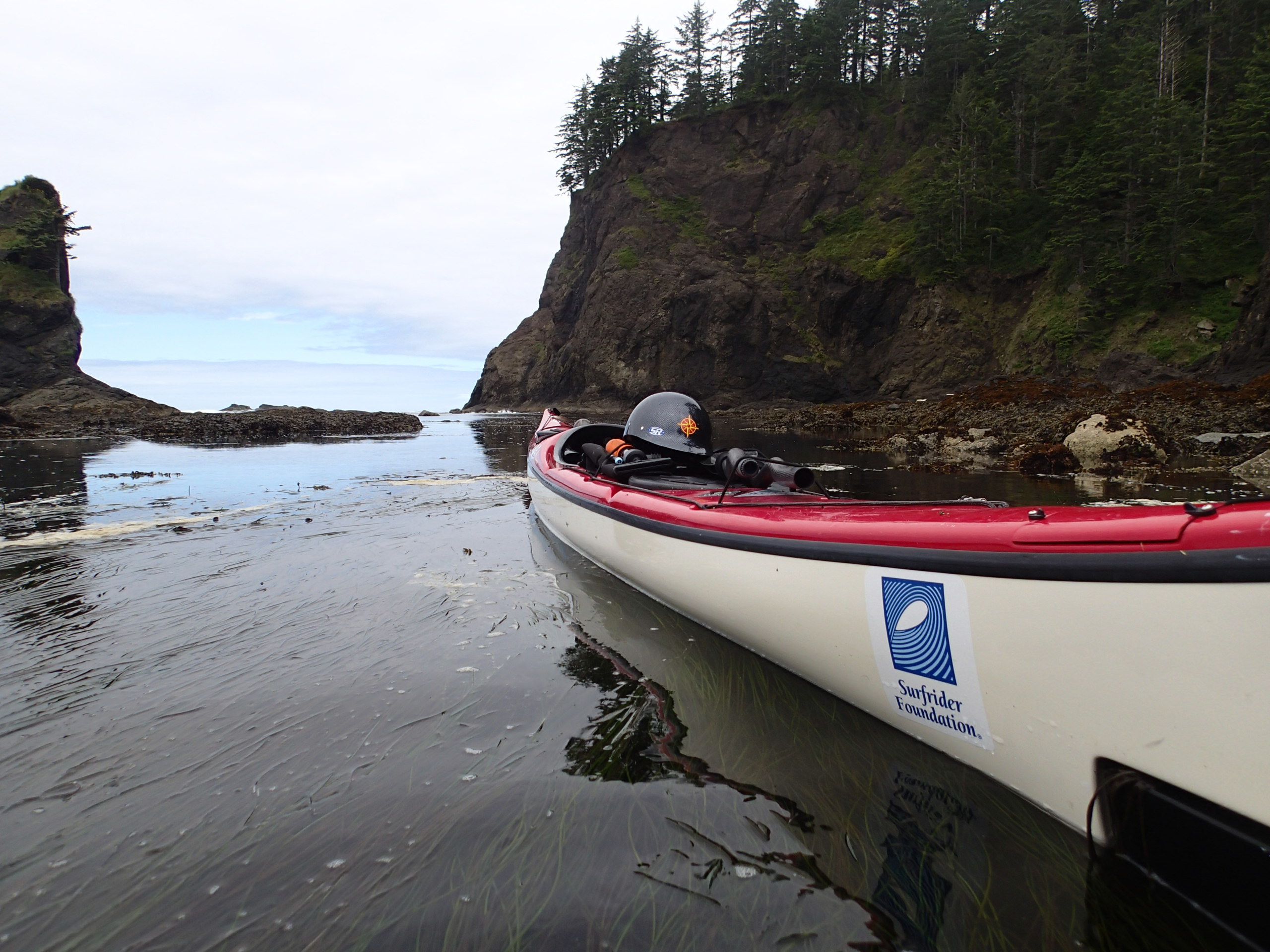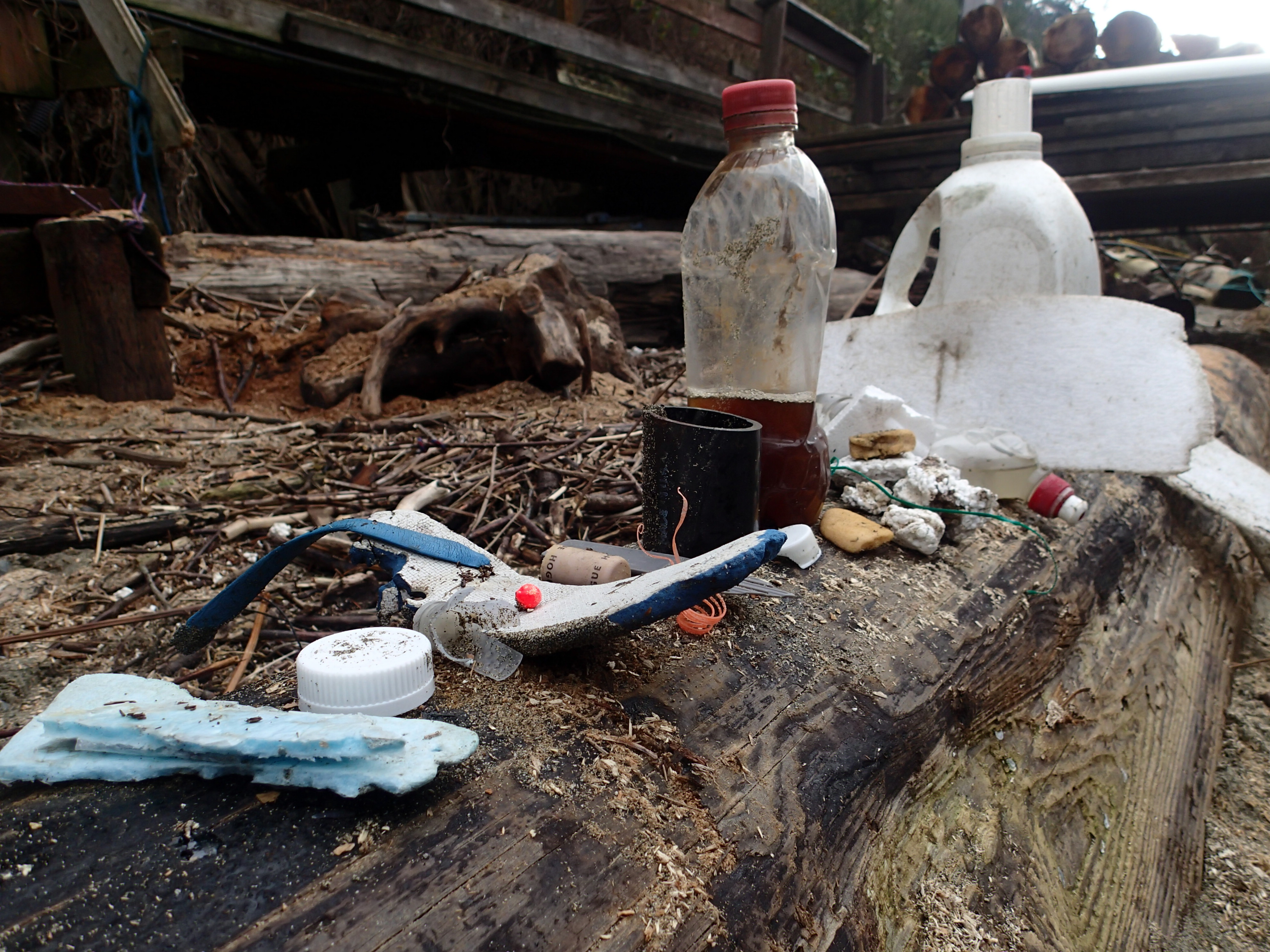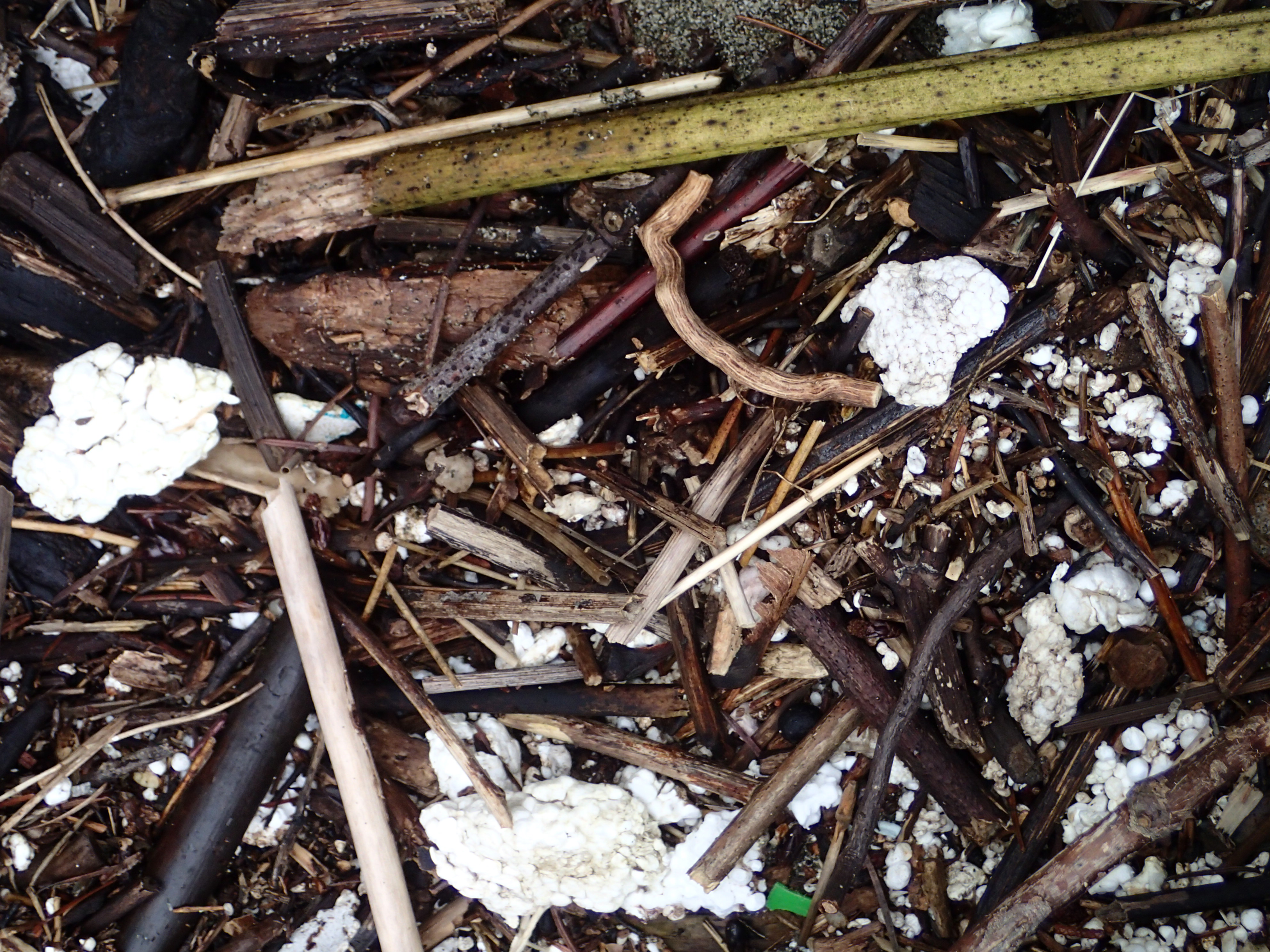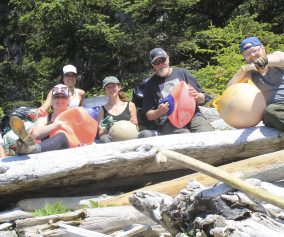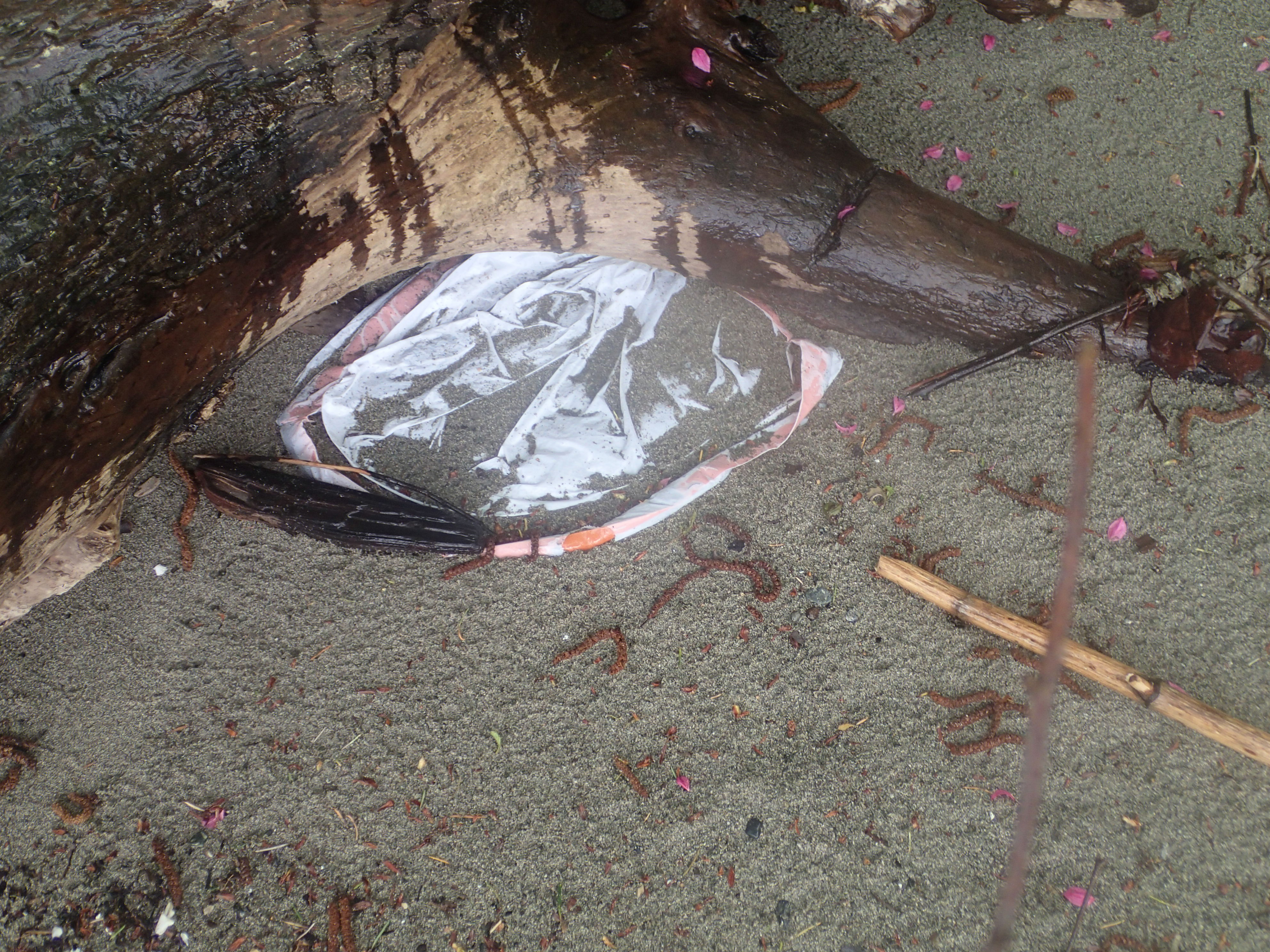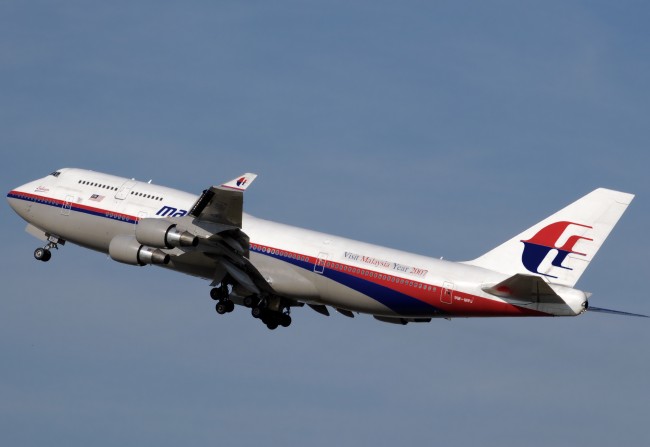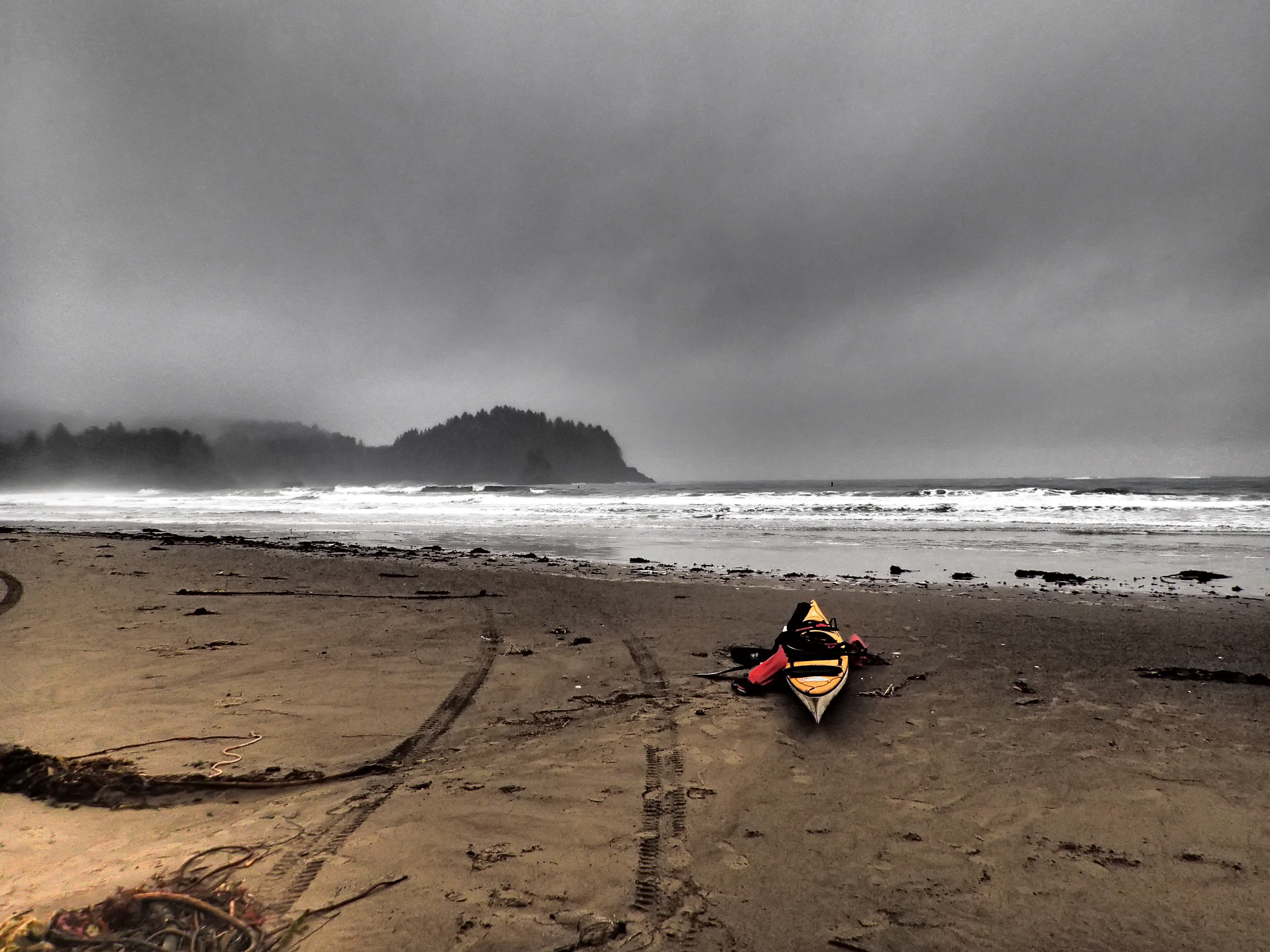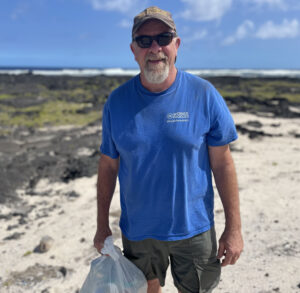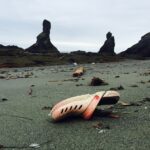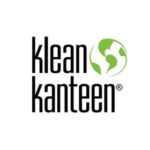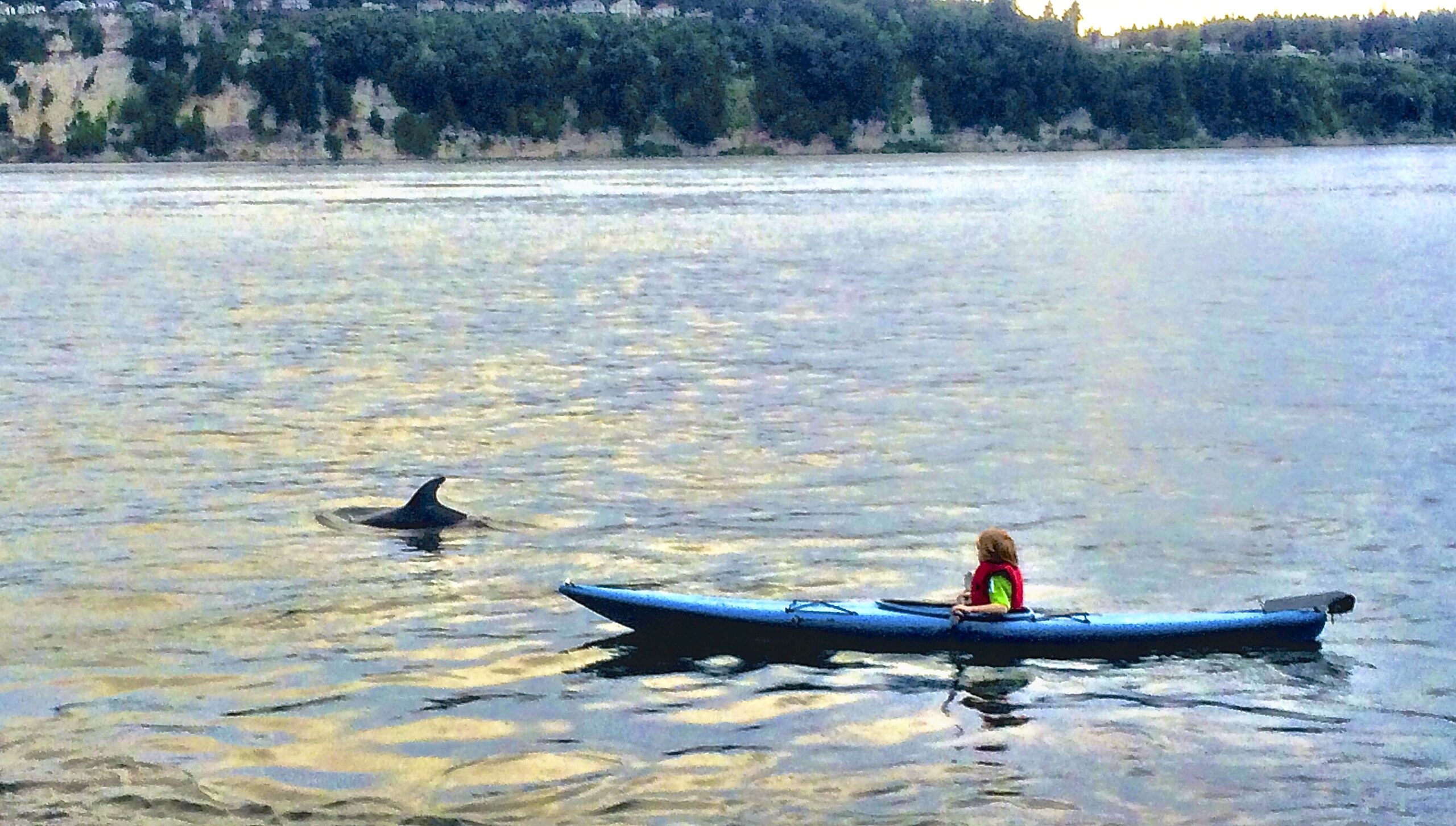I live on a beach. My house is built on pilings out above a sand and gravel stretch of the Tacoma Narrows, along with 80 or so others. I tell people that my basement floods twice a day. Get it? Because the tide comes in and… Never mind.
It’s a beautiful spot and I hope I never leave. Still, it is a beach and it is subjected to many of the same pollution issues that affect other beaches, like the ones on the Olympic peninsula that we surveyed last year or the ones in Alaska where we’re headed this summer. We don’t get any Chinese water bottles or Japanese net floats on our little beach, but we do have a solid representation of that most pervasive of marine plastics: foamed polystyrene, more commonly known as Styrofoam.
There is other debris as well… soda bottles and lengths of nylon rope, plastic cups and sections of PVC pipe, but the most common item is foamed plastic. Sometimes we get the big chunks, but most often it’s the little ones, right down to the single grains of egg-white plastic, distributed thickly among the pebbles and the wood chips.
I clean up our section of the beach from time to time, removing what I can to the trash or the recycling bin. But I can’t get these little pieces. Or, more to the point, even if I could get them, I could never get enough of them to matter. At least if I can get the big chunks before they have a chance to split apart, I’ll have done well and kept that much plastic off the beach.
It’s hard though. After I “clean” the beach, the wrack line is still awash in foam. And not in a good way.

